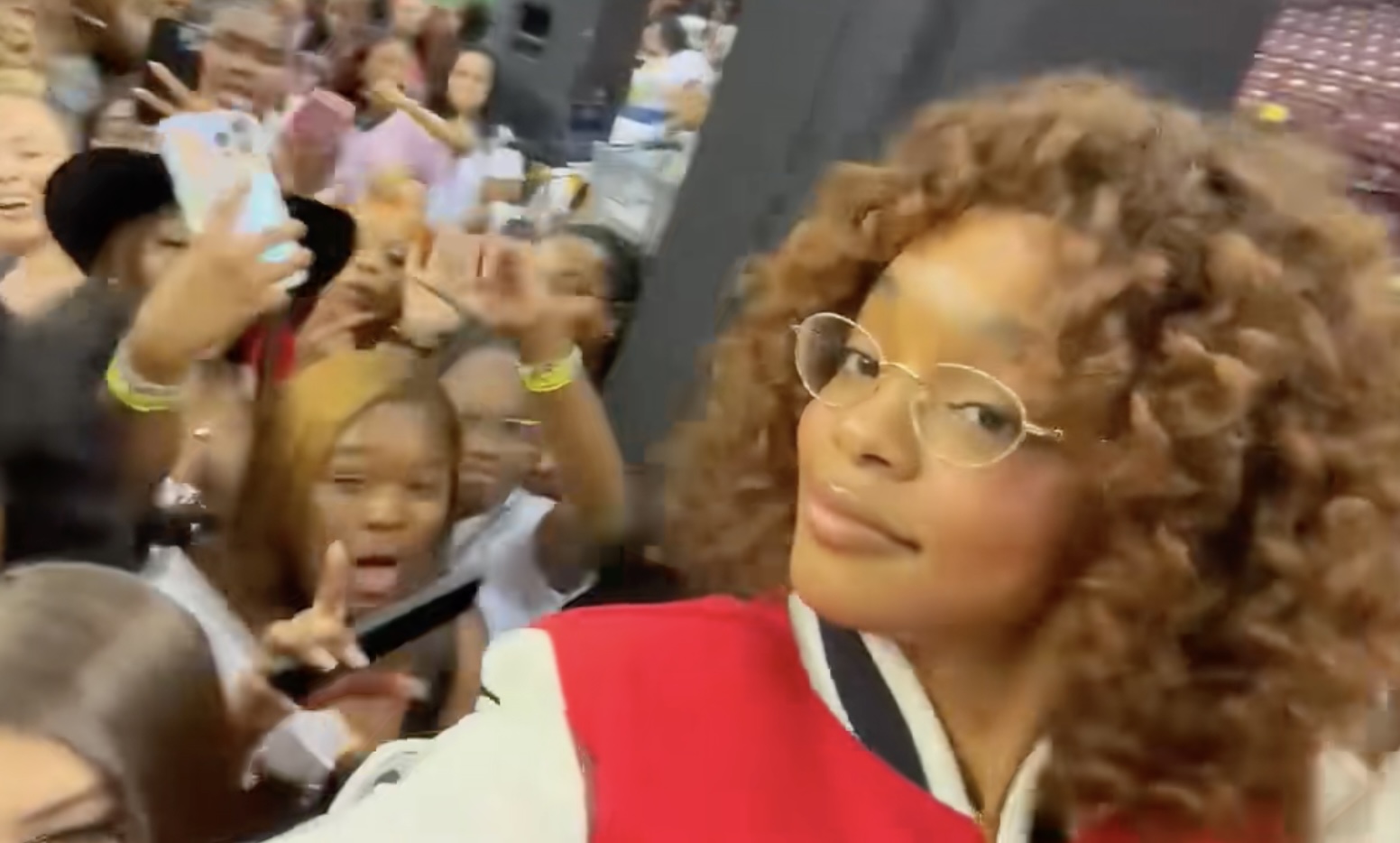The air was thick with anticipation, even after summer rain forced the crowd indoors. Music echoed off the walls in the indoor arena, and plans had to be changed at the last minute. In Houston this summer, Marsai Martin’s annual Sai Summer Cookout was less a party than a reminder that celebration, in all its messy, joyous, complicated ways, is still the heartbeat of Black life in America.
At just 21, Martin has already carried the weight of being Hollywood’s youngest executive producer, a precocious star who rose to fame on TV’s “Black-ish”, and who turned herself into a business. But here, she was also a convener. The cookout, now in its third year, has evolved into a gathering where HBCU pride, Black joy, celebrity presence, and corporate sponsorships are intended to converge. The event looked like a block party but carried the intentionality of a summit, a space where belonging and branding came together without losing the intimacy of a family reunion. This year, the event took place at Texas Southern University, an HBCU in Houston. In its first year, the event was hosted in Atlanta. The following year, 2024, Martin took the cookout to Washington, D.C. Those last two gatherings brought in more than 2,000 guests each, according to the event’s website. Even though the most recent event was forced indoors because of rain, and some guests voiced their frustrations online about canceled performances, the show persevered.
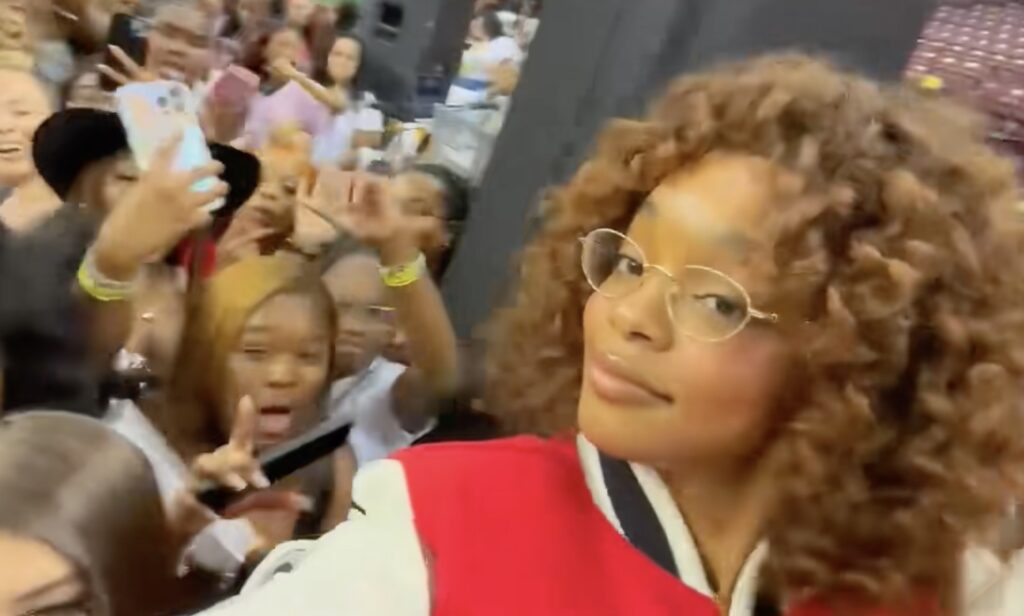
That paradox of shaky logistics and resilience, regardless, is what has always defined Black gatherings. They are never only social.
From the sprawling family reunions now hosted at Sheila Johnson’s Black-owned Salamander Resort in Virginia, to the annual Congressional Black Caucus meeting in Washington, to Spike Lee’s once-beloved Michael Jackson birthday celebration in Brooklyn’s Prospect Park, Black gatherings have always functioned as much-needed counterweights to a world bent on diminishing Black existence.
According to the Smithsonian’s National Museum of African American History and Culture, it was once illegal in many Southern states for Black Americans to gather. Meeting with one another was a form of resistance.
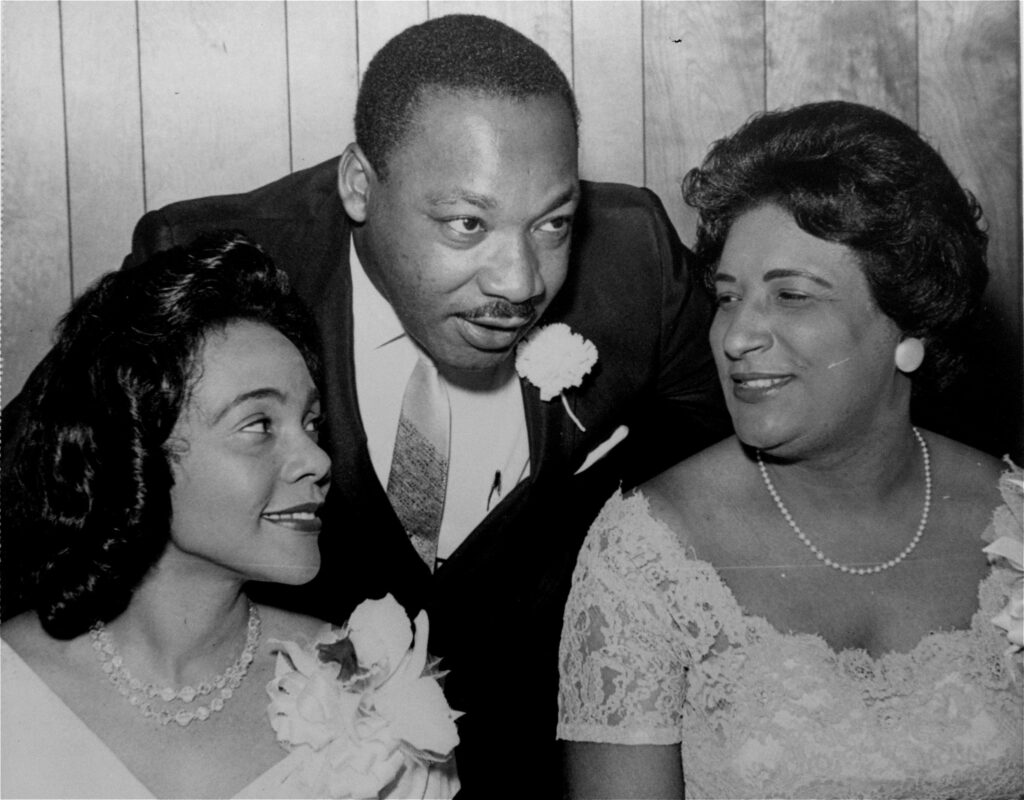
Before there were sponsorships or hashtags, there were church picnics on Sunday afternoons, NAACP banquets in rented halls, and neighborhood block parties that doubled as safety nets. Each period of time reimagined the act of Black fellowship, layering new meaning onto old forms. The Essence Festival of Culture in New Orleans, Juneteenth parades in Texas, and even the homecoming tailgates at Howard and Morehouse, are all variations on the same practice of refusing erasure by insisting on visibility together.
“We saw our people gathering daily during the big campaigns of the Civil Rights Movement,” said Mijha Godfrey, founder of Jambo Books in Decatur, Georgia. “They got to look each other in the eyes and laugh, or commiserate, or dance, or problem-solve almost daily. That’s what got them through the darkest times. Humans were made for connection.”
If the cookout is one of the oldest traditions in the canon of Black joy, Martin’s version is targeted as the remix for a new era. On the heels of the BET Hip-Hop Awards and the Soul Train Music Awards being suspended indefinitely, other Black celebrations have also withered. Millennials and Gen Z, who grew up on spring break specials and the Source Awards, now find fewer spaces where excellence is showcased communally. What happens next? Martin seems intent on providing an answer.
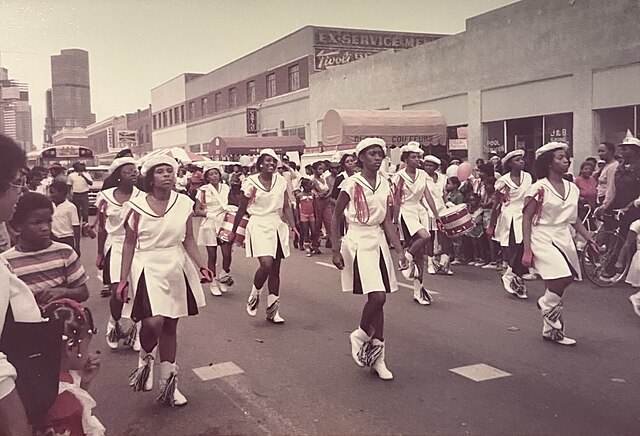
Martin’s annual cookout, to some, has become a kind of proving ground: an experiment in how corporate money, celebrity cachet, and grassroots intimacy can coexist without hollowing out authenticity.
“It’s a slippery slope,” said Teja Smith, CEO of Get Social, a social media agency dedicated to women of color working in social justice and advocacy.
“Corporations have a lot to lose in this economy, but the Black community also needs these opportunities. We can’t always fund our own activities. Having sponsorships matters,” she said. “What Marsai Martin is doing is incredibly important for today’s economy, especially for Black influencers, actors, models, and others. We’ve been needing a new place to gather, and she is starting something smart, something that can grow.”
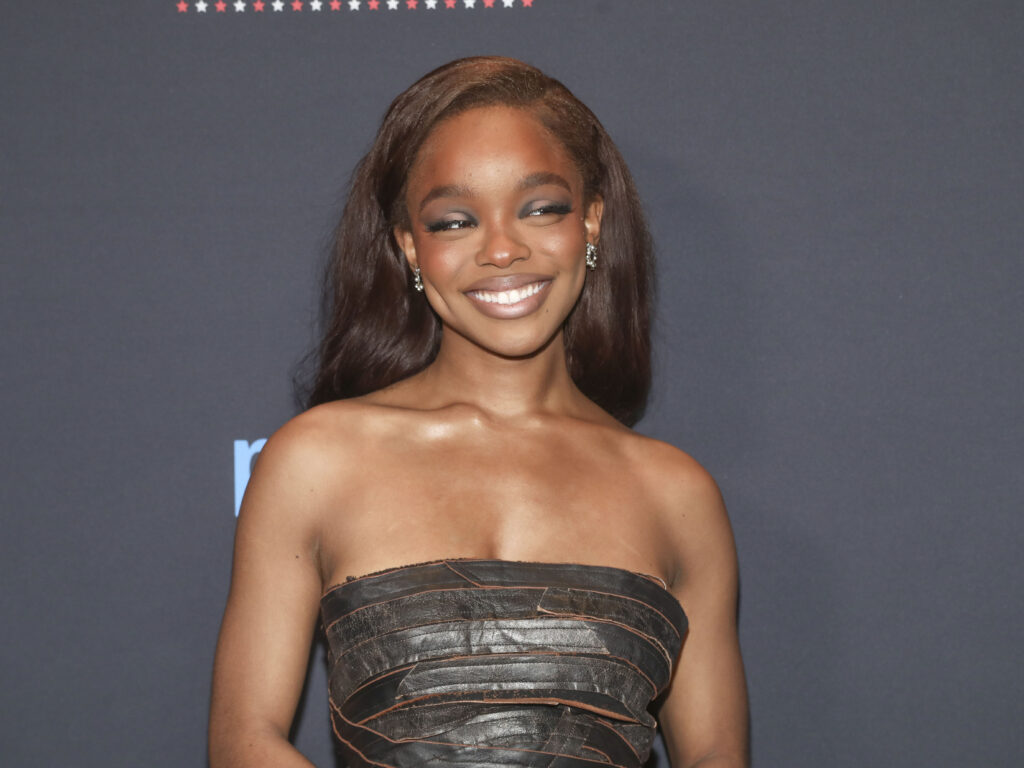
Promotional materials listed sponsors such as Fenty Beauty, Rihanna’s makeup brand, Chime, and Dove; TikTok clips suggest some activations were on-site, though the rain complicated many of the planned activities
In TikTok posts, some attendees are seen complaining and even asking for refunds, while others defend Martin, pointing out that the rainy weather and its disruption were beyond her control. At the same time, social media videos show that attendees also mingled in a way that made the moment itself, not the sponsors, the main event.
“Walking into Marsai Martin’s cookout would feel like stepping into a mirror and a megaphone at once,” said Ibert Schultz, who runs Building College Success, a nonprofit for Black students in Los Angeles.
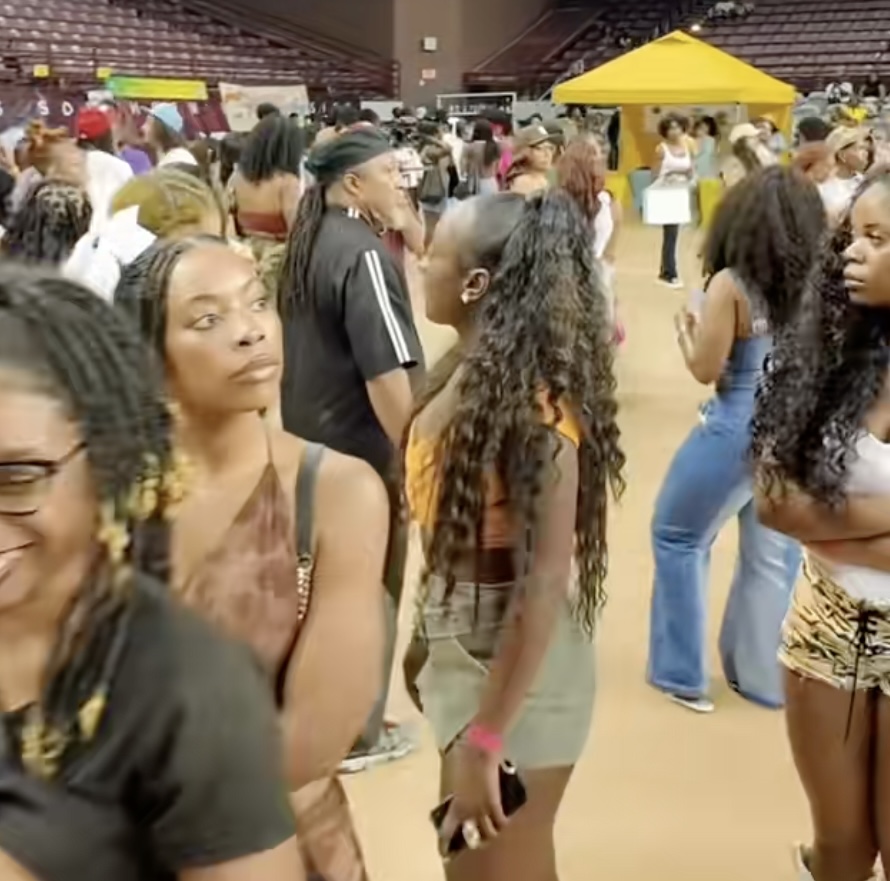
Schultz did not attend the event, but made his comments based on experience.
“You’re reflected everywhere, and your presence is amplified by the collective energy. It’s a safe space that’s vibrant and alive, unifying across differences and affirming that the culture you’re building together is as powerful as the institution itself.”
Part of that depth comes from the moment in which we’re living. The pandemic fractured the cadence of gathering, forcing block parties into Zoom rooms and replacing cookouts with online DJ sets. Black Twitter became the stand-in for a neighborhood, a daily block party where culture was created in real time. But now, that digital energy has bled back into physical spaces.

“Black Twitter is still alive, but post-COVID, that energy extends to Houston lawns, L.A. rooftops, branded festivals,” said Lindiwe Davis, a cultural strategist based in New York City. “While the online space continues to grow, it is now linked to physical moments, and this is a reclaiming of time and connection after so much isolation.”
Still, every gain comes with a cost. What happens when a cookout stops being something your cousin told you about and turns into an Instagram reel tailored for sponsors? That’s the tension Davis keeps coming back to.
“We risk losing intimacy, but we gain reach. A neighborhood cookout can now become a national moment, but the challenge is to protect the integrity of why we gather in the first place.”

Contrecia Tharpe, a brand strategist based in Nashville, Tennessee, agrees but pushes further.
“People no longer want to feel like support is hidden or shaky,” Tharpe said. “Intentional engagement opportunities that benefit all parties involved are a must. People don’t want quiet support, allyship, or advocacy. They want it loud, proud and obvious.”
Earlier generations marched with picket signs, but today’s students gather with cameras rolling.
According to Schultz, the symbolism may be different, but the power of being seen joyfully together has not changed.
It’s less a shift than an expansion,” Schultz said. “Black joy together has always been revolutionary, but social media amplifies what past generations already knew, that symbolism, and togetherness carry power. There’s a sharper awareness now that joy itself is rebellious, that gathering to laugh and be visible together is both celebration and protection.”
That rebellion may matter now more than ever.
In Los Angeles earlier this year, Johnny Gill’s birthday party spread across social media, a viral example of how Black celebrity still functions as a form of collective gathering. At Salamander Resort, the family reunions continue, serving as proof of Black ownership and legacy. In Washington, the Congressional Black Caucus meeting doubles as both a policy hub and a social reunion. Each moment demonstrates the elasticity of gathering: it can be as intimate as a plate of ribs with cousins or as institutional as a conference at a luxury hotel.
In all cases, the meaning is larger than the event.
That was true in Houston, too. The cookout ended with dancing, plates emptied of mac and cheese, and students buzzing about next year.
For Martin, the day was proof that she could curate a space where culture, commerce, and community not only coexisted but enriched one another. For attendees, it was a reminder that even in an era of fractured attention and algorithmic feeds, the simple act of being together was an act of restoring one another’s energy.
Success, in that context, is hard to quantify. Smith, the social media CEO, insists it’s not just about impressions or clicks. “The viral and organic moments represent the cultural moments that show up on social media and are worth more than just an impression, click, or like,” Smith said. “We are witnessing a shift towards de-influencing on social media.”


